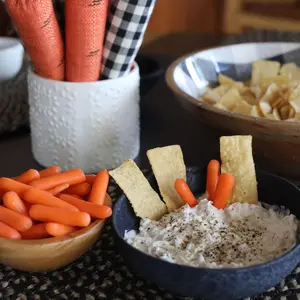
Healthy Kids
Healthy Kids
Gut Health for Kids: Clever Strategies for Picky Eaters
Most kids look forward to summer vacation, but the dog days can eventually lead to boredom and over-snacking. By creatively offering children healthy, diverse foods, presented in ways to please even finicky palates, parents can support microbiome health while establishing a lifetime of good eating habits.
Tickle Their Palate
“Foods with probiotic-containing living cultures or fermented foods can add beneficial bacteria to the gut,” says Jill Castle, a Massachusetts-based pediatric dietitian and founding CEO of The Nourished Child, an online nutrition resource for parents. She recommends incorporating treats that are alive, tart and bubbling with healthful microbes.
“Parents can make sure they offer a variety of prebiotic and probiotic foods routinely at mealtimes as options to taste and try. The good news is there are many healthy, gut-supporting foods for children to eat,” she advises.
Yogurt with live or active cultures and kefir, a fermented milk drink, both contain these beneficial probiotics. “Although kefir tends to be sour, some brands have flavored kefir, such as strawberry, mango or peach,” Castle explains. “I've had great luck introducing this to children who are picky, because it's smooth and creamy and tastes like a smoothie.”
She also notes that kombucha, a fizzy, fermented tea with live and active cultures, is available in fruity flavors that appeal to children. Pickles fermented over time with salt and water are a source of healthy bacteria for the gut. And although cheeses are fermented, only a few have live, active cultures. Castle recommends gouda, mozzarella or cheddar.
Sneak in the Fiber
According to Dr. Joanne Aponte, a naturopathic doctor at Lakeside Natural Medicine, in Milwaukee, a diverse diet high in fiber is key to supporting a healthy gut microbiome. “All veggies are beneficial, but ones high in galacto-oligosaccharide (GOS) and fructo-oligosaccharide (FOS) prebiotics help grow and support healthy gut bacteria,” she explains. GOS-rich foods include beans, lentils and peas, along with broccoli, cauliflower and Brussels sprouts, while FOS-predominant choices are garlic, onions, asparagus, artichokes and leeks.
Aponte also recommends chia, flax, pumpkin and sunflower seeds, which can be ground up in an inexpensive coffee grinder and added to smoothies, oatmeal, yogurt or home-baked goods such as cookies, pancakes or waffles. “Sunflower butter can be used to make cookies,” Aponte notes. “I make oatmeal-sunflower butter cookies that are packed with microbiome-supporting oatmeal, pumpkin, ground chia seeds and, of course, chocolate chips.”
For children that are choosy about vegetables, Aponte suggests making zucchini or carrot muffins with ground chia seeds or walnuts. Entice children to eat raw veggies by offering dipping sauces, such as teriyaki, ranch dressing or salsa. Aponte notes that skins should be left on vegetables whenever possible because they contain fiber, which helps feed the gut microbiome.
“It takes some experimentation, but encourage your child to try lots of different foods,” Aponte says. “Some kids might prefer a black bean spread or dip, or refried beans, versus eating whole beans. There are also pastas made with chickpeas or lentils. Veggies like onion or zucchini can be chopped small and hidden in spaghetti sauce.”
Add a Pinch of Fun
Katrina Lien, the program development specialist for Sanford Fit, a children’s fitness program for kids in rural South Dakota, North Dakota and Minnesota, suggests that parents find ways to engage and empower kids to make healthy lifestyle choices.
“Try offering new foods with foods that you know your kids already like,” she says. “When you introduce something new or unfamiliar alongside foods that are a well-known favorite, kids are more open to trying the unfamiliar food.”
Attempt to make foods more interesting and fun, Lien advises. “This can be done by how you arrange the food items on the plate or cutting foods into different shapes. For example, use a cookie cutter to turn simple cucumber slices into a heart or a star.”
According to Lien, when parents involve their children in snack and meal preparation, kids feel included and excited to try the foods they helped create. Although getting kids interested in unfamiliar foods can be laborious and time-consuming, parents should remind themselves to be patient and remain consistent.
Sanford fit offers free, online resources through printable literature, videos, lessons and games at fit.SanfordHealth.org.
Sheila Julson is a freelance writer and contributor to Natural Awakenings magazine.
Original article published at Natural Awakenings


 By
By






